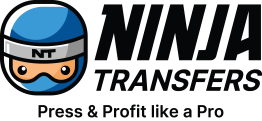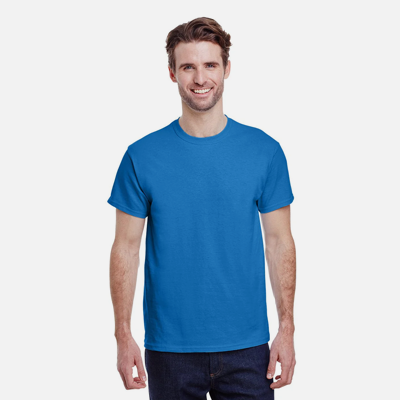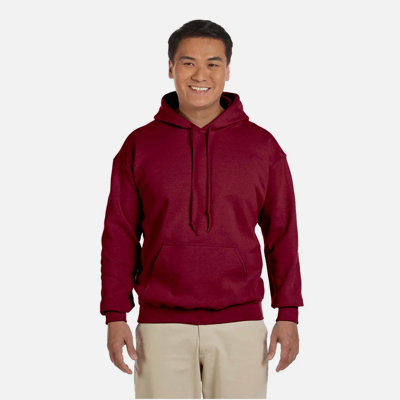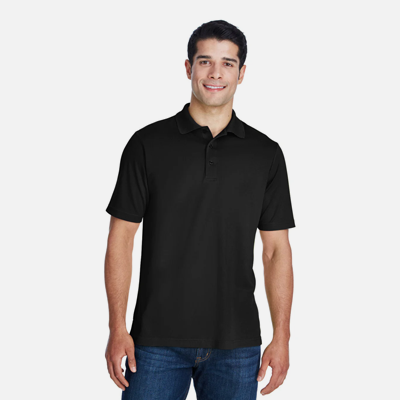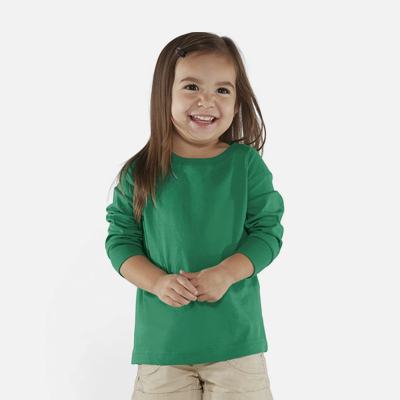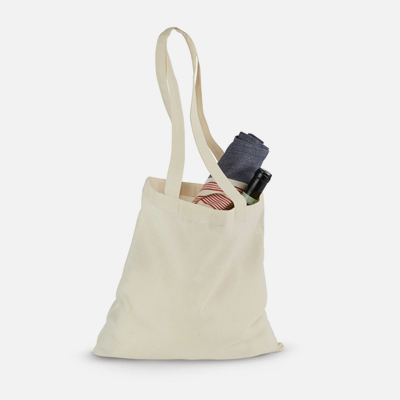If you've learned the basics of pressing DTF transfers, you're probably looking for ways to boost your efficiency and tackle larger production runs. Whether you're scaling up your custom apparel business or simply aiming to streamline your process, pressing multiple DTF transfer areas simultaneously can be a game-changer. This technique saves time and enhances productivity without compromising quality.
In this quick guide, we walk you through the ins and outs of pressing multiple DTF transfer areas in a single pass so you can learn how to shave minutes off each garment, potentially saving hours on big orders. We'll cover the best area combinations, essential tools, and pro tips to ensure your multi-area presses come out perfect every time. Let's jump in.

Why press multiple areas at the same time?
The primary benefit of pressing multiple DTF transfer areas simultaneously is the significant time savings. This technique can shave several minutes off each garment, which adds up quickly over a large production run. For example, if you save just 2 minutes per shirt on a 100-piece order, that's over 3 hours of time saved.
But time isn't the only advantage:
- Reduced heat exposure: Less time under the heat press means less stress on the fabric, reducing scorching and potentially extending the garment's lifespan.
- Consistent results: Pressing areas together ensures uniform heat distribution, leading to more consistent adhesion across different parts of the garment.
- Energy efficiency: Fewer presses mean less energy consumption, which is good for both your utility bills and the environment.
- Increased output: With faster production times, you can take on more orders or offer quicker turnaround times to clients.
- Reduced wear on equipment: Fewer press cycles can help extend the life of your heat press machine.
Essential tools and techniques for multi-area pressing
- Precise positioning is crucial when working with multiple transfers. Use an Alignment Ruler Set to ensure each design is perfectly placed before pressing. This tool helps maintain consistency across garments and prevents costly mistakes from misaligned transfers.
- Secure your transfers with Thermal Heat Tape to prevent shifting during positioning and pressing. This is especially important when working with multiple areas, as manipulating the garment could easily disturb transfer placement. The tape peels off easily after pressing without leaving residue.
- Invest in a Silicone Upper Platen Cover for your heat press. It offers more padding than standard guard sheets, providing better pressure distribution. This extra cushioning is particularly useful when pressing over buttons, zippers, or slight wrinkles that may occur when positioning multiple transfers on a garment.
- When working with garments that have uneven surfaces due to seams, buttons, or zippers, Heat Press Pillows are invaluable. They help distribute heat and pressure evenly, ensuring consistent transfer application even when folding garments or pressing over structural elements.
- After pressing, hold the garment steady while peeling off the carrier sheet. This maintains the positioning for any subsequent pressings and ensures consistent results across all transfer areas. A steady hand here can prevent shifting that might disturb the second pressing.
- Invest some time learning the various techniques and expert tips for applying and pressing DTF transfers at the Ninja University section of our website.

Best areas to press together
When pressing multiple DTF transfer areas simultaneously, some combinations work better than others. Here are the most effective pairings:
- Left chest + sleeve: This classic combo is perfect for corporate wear or team uniforms. Fold the sleeve inward, positioning it flat on the press next to the chest area. Ensure the sleeve transfer is centered on the available space. This pairing works well because both areas are typically small and can easily fit on the press together.
- Full front + sleeve: This combination is possible with a smaller center chest print. Position the sleeve as described above, but be mindful of the size of your front design. If the front print is too large, it may overlap with the sleeve area, making this pairing impractical.
- Inside collar + full front or left chest: This is great for adding brand labels or size information. Remove any existing tags first. Position the small collar transfer near the top of the press, then place the front design below it. This works best with a smaller inside collar tag area. Be careful not to overlap the transfers.
- Upper back + center back: This combination is ideal for sports jerseys or uniforms requiring a name and number. Place the name transfer (usually arched) at the top of the press, with the larger number below it. Ensure proper spacing between the two elements. This combination saves significant time when producing team gear.
- Split full front: This technique is crucial for garments with center closures like zippers or buttons. Cut your transfer design in half vertically, then position each half on either side of the closure. Use heat press pillows to create an even surface. This method allows you to achieve a full front print on items like hoodies or baseball jerseys without pressing directly over hardware.
- Artistic placements: For unique, creative designs, you can press multiple small DTF elements across a garment simultaneously. Cut out individual elements and arrange them artistically. This technique works well for abstract designs or creating a scattered effect. Be extra careful with alignment, as the overall look depends on the precise positioning of each element.
The key to successful multi-area pressing is ensuring all transfers fit comfortably on your heat press without overlapping. Always do a test press when trying a new combination to ensure quality results. Refer to our DTF Placement Guide to learn all the standard print sizes and placements.

Maximizing your DTF transfer efficiency
Pressing multiple DTF transfer areas simultaneously is a game-changer for custom apparel production. By mastering these techniques, you'll slash production times, boost efficiency, and maintain high-quality results. Remember, success hinges on proper preparation, precise positioning, and the right tools.
As you refine your multi-area pressing skills, you'll discover the perfect balance between speed and quality. This expertise will allow you to tackle larger orders, reduce turnaround times, and potentially expand your business capacity.
At Ninja Transfers, we're committed to your success. From high-quality DTF transfers to premium blank apparel and essential heat pressing supplies, we've got everything you need to elevate your custom apparel game. Dive in, experiment, and watch your productivity soar.
